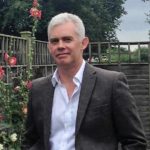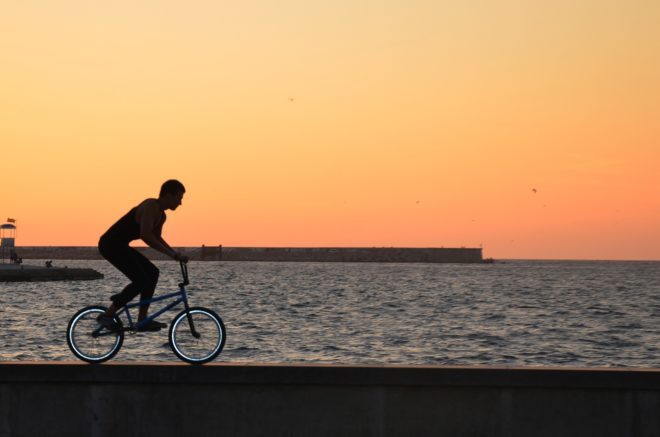Did you know it’s impossible to be stressed and relaxed at the same time? An odd but interesting fact that many of us may never stop to think about. Yet relaxation is one of the most important key signatures of health.
If you were asked to describe what relaxation is or what it means to you, what would you say or do? Would you paint a picture, describe an activity, recall a memory, a vibration, a face, a place, a colour, image or shape?
Maybe just one word like sleep, music or meditation, a name, an environment or a feeling can capture the very quintessence of how you relate to and enjoy the experience of relaxation.
Perhaps it’s a multi-sensory event or a carefully ordered sequence of several things that creates your relaxation habit.
Like many things, relaxation is subjective. It means different things to different people at different times for different reasons.
Everyone is different and as individuals our perceptions, values and belief systems are as unique as our parallax of vision, our fingerprints or our DNA – or at least this is what we are subconsciously programmed to think.
When we begin to explore the symbiosis of the mind and body, we find that despite our apparent individuality we are all genetically and bio-chemically very alike. In fact, we are literally identical.
When we peel back the uniqueness of our personalities we find the same atomic infrastructure of cells, chemicals, relationships, vibrations and processes that are the Universal building blocks of being human.
When you stop and think about this, our commonality is infinite.
Movement, respiration, speech, thinking, eating, smiling, crying, kissing, hydrating, how we feel elation, pain or anxiety, our emotional sensitivities or the butterflies of love are all examples of how we share common cellular and sub-cellular processes.
It’s the entire library of our cellular processes which combine miraculously to create the neurological bio-chemical experience we call life.
In simple terms, our thoughts are the drivers, catalysts and change agents that shape, direct and support the outcomes of our neural chemistry and bio-physiology.
What we think, how we think and how we relate to our thoughts are some of the keys that switch us between our conscious and subconscious processes – between our conscious and subconscious selves.
When we experience anything new for the first time we consciously pay attention to what we’re learning so that with repetition we can remember what to do in a moment and fine-tune our skill or our enjoyment of something.
Once we’ve practised a few times and retained our new sensory and chemical knowledge, we begin to behave more and more without conscious effort, as the footprint of what we’ve learned is hard-wired into the subconscious memory of our cells.
This is how we learn everything. This is how we can learn to relax.
Imagine for a moment what it was like learning to ride a bicycle. To begin, we’d balance on the seat while holding the handle bars.
As we perfected this consciously, we’d move on to the next phase of learning which might have been pedalling while seated and holding on to the handle bars.
Subconsciously, we can now sit on the bike and hold the handle bars, however when we move the pedals we think consciously about this range of movement and how we relate to it in the moment of new multi-sensory experience as well as how we update the subconscious process that started by sitting on the seat and holding the handle bars which now extends to using the pedals.
With each progression, we key switch automatically between our subconscious and conscious states until we master the art of cycling and it becomes a well-rehearsed subconscious habit.
The human mind-body has infinite capacity to learn. Our health and wellbeing is literally dependent upon the energy we bring to our individual and collective experiences.
Back to learning to ride the bicycle for a moment, thinking negatively about actually falling off the bike produces stress responses inside the mind and body.
Chances are by repeating the thought of falling means that at some point this is what will almost inevitably happen, unless we change the story we’re telling our cells by changing the energy of our thought processes.
Typically, stress responses can extend the length of time that it takes to learn, it can make learning unenjoyable and in some cases impossible.
Prolonged stress can result in blocked energy, it can suppress the immune system and prevent the mind and body performing optimally if left untreated.
Triggering a stress response repeatedly will become a negative habit, inhibit development and simply causes more and more distress as it fast becomes negatively self-fulfilling.
Relaxation, on the other hand, is a self-empowering key for breaking negative thought spirals.
Unlike stress, relaxation allows us to experience healthier outcomes like a decrease in heart rate, blood pressure, and muscle tension, it boosts our immune system, improves sleep patterns, alleviates stress, and elevates mood and optimism, all of which helps to reduce the effects of anxiety and depression.
This Results in Better Self-Care and Improved Health.
In the medical world, when the mind and body co-create the right cellular conditions to cultivate, regulate and energise a state of optimal performance, this is called ‘homeostasis’.
In our Universe of super-conscious expression, the key that switches us into the landscape of human-intelligent homeostasis begins with conscious relaxation. With repetition of conscious relaxation techniques, it is possible to re-programme our subconscious relaxation response so that it can be triggered ‘on demand’ to negate stress and promote health and wellbeing.
Remembering that it’s impossible to be stressed and relaxed at the same time, relaxation begins to feel like a really smart choice because it creates health inside the mind-body and simultaneously suppresses negative neural connectivity in our cells.
Like most things, relaxation is something that all of us can learn and benefit from. Our awareness of key switching between states can help to refocus thoughts and this can change the way we look at ourselves, each other, at life and perhaps society as a whole.
Being aware of our shared ability to reprogramme our subconscious cells is a great start. Learning to actively key switch to trigger our relaxation response will elevate the energy vibration of our integrated network of Chakras.
Applying different relaxation keys found in activities such as meditation, yoga, active imagery, Tai Chi or co-creative imagery can become part of a beautiful journey into super-conscious expression where we each learn to become the empowered master of our conscious and subconscious programming.
Key switching is a transformational tool that begins to unlock the potential of human capability beyond that which was previously thought possible.
As a writer, Light Worker and Reiki Master, it’s important for my mind-body energy to be relaxed when I work. I use a simple but powerful Chakra relaxation technique which helps to keep my energy meridians balanced and open so that energies flow unconditionally to wherever they are needed.
I use different variations of this technique in healing sessions to activate, regenerate and accelerate relaxation synthesis between Chakra meridians and the cellular processes they support.
I think of relaxation as the moment when the energies of my inner and outer Universe fuse seamlessly to create the opportunity for co-creative healing, transformation and regenesis.
The sensory feeling of relaxation is probably a unique experience for all of us and our common neural chemistry and molecular processes bring us much closer together as humans than we might think.
Poignantly, relaxation is a positive and healthy state of mind-body harmony that all human beings can learn, switch on and master. Once relaxation is switched on, it becomes a karmic key with the potential to liberate and transform lives everywhere.
You may also be interested in our Mind and Body Balance Holistic Magazine.
You can find much more information on living a holistic lifestyle in these free magazines and on our YouTube channel.
 Adrian Jones – Author, Dreams Rainbows and Butterflies
Adrian Jones – Author, Dreams Rainbows and Butterflies






